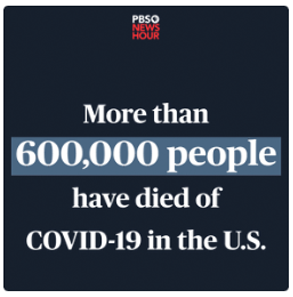Health Plan Weekly
-
‘Rough Ride’ Ahead: Experts Offer Predictions, Advice for Embattled Health Insurers
The health insurance industry, it seems, is at a crossroads.
Companies big and small are facing policy pressures, from the looming expiration of enhanced Affordable Care Act subsidies to provisions in the “Big Beautiful Bill” that will erode Medicaid enrollment. Financial headwinds are also swirling, with elevated care utilization trends plaguing various business lines and multiple publicly traded insurers cutting their full-year earnings outlooks. And in the months following the killing of UnitedHealthcare CEO Brian Thompson, public resentment of insurers continues to simmer — potentially driving further scrutiny from policymakers.
“For the health insurance industry, it seems to me like there’s no easy money to be found anywhere right now,” says Katherine Hempstead, Ph.D., senior policy adviser at the Robert Wood Johnson Foundation.
In its most recent Healthcare Quarterly Report, Moody’s Ratings offered reasons for both pessimism and optimism.
“For now, our outlook on the sector is negative, reflecting adverse medical cost trends, driven in part by coverage of expensive new drugs such as GLP-1s for weight loss and increasing behavioral health utilization,” the credit rating firm wrote. “Insurers, however, will continue to take steps to boost EBITDA by continuing to exit underperforming markets and redesign plans to reduce benefits and/or increase co-pays.”
For the final issue of Health Plan Weekly, we asked industry experts what they think is in store for insurers in the second half of the year — and what they can do to meet those challenges and prepare for 2026 and beyond.

-
Molina Lowers Earnings Guidance; Centene Posts 2Q Miss
Molina Healthcare, Inc. on July 23 became the latest insurer to lower its earnings guidance for the year, attributing the change primarily to challenges in the Affordable Care Act exchange segment. Centene Corp. withdrew its guidance this month, while Oscar Health, Inc. and Elevance Health, Inc. each lowered their guidance, citing a worsening exchange market.
Centene, meanwhile, on July 25 posted a second-quarter net loss of $0.16 per share, compared with earnings per share (EPS) of $2.42 in the second quarter of last year. That earnings figure was also below the $0.09 EPS Wall Street consensus estimate. The company had a 93.0% medical loss ratio (MLR) in the second quarter, above (worse than) the 92.3% consensus and up from 87.6% in last year’s second quarter.

-
Shareholder Suits Against Elevance, Centene Face Long Odds
Both Centene Corp. and Elevance Health, Inc. are facing lawsuits filed in recent months that accuse them of violating federal securities laws by misleading investors about the firms’ waning financial health.
Those suits are not the first to target struggling health insurers. Humana Inc. shareholders filed litigation in July 2024 that accuses top executives of misleading investors about earnings pressures in the insurer’s Medicare Advantage business. And UnitedHealth Group shareholders filed a complaint in May 2024 that accuses the company of covering up antitrust issues that sparked a Dept. of Justice investigation.
One prominent securities law expert, however, says that it’s extremely challenging for such litigation to bear fruit.

-
Medicare Advantage Insurers Face Lawmakers on Prior Authorization, Payment Concerns
As Medicare Advantage insurers respond to mounting scrutiny over their risk adjustment and prior authorization practices, lawmakers during a recent congressional hearing pressed MA organizations and other stakeholders on ways to address these hot-button topics. The July 22 hearing, “Medicare Advantage: Past Lessons, Present Insights, Future Opportunities,” was held by the Health and Oversight subcommittees of the House Ways and Means Committee.
“I’m particularly excited about the supplemental benefits MA plans provide to improve health and wellness, such as access to fitness memberships, wearable technologies, and healthy meal options,” stated Ways and Means Health Subcommittee Chairman Vern Buchanan (R-Fla.), a longtime supporter of the MA program. Now in its 20th plan year under its current structure, the managed Medicare program is ripe for reform.

-
News Briefs: UnitedHealth Acknowledges DOJ Probe Into Medicare Billing
UnitedHealth Group for the first time acknowledged in a July 24 Securities and Exchange Commission filing that it had “begun complying with formal criminal and civil requests from the Dept. of Justice (DOJ). The disclosure occurred two weeks after the Wall Street Journal reported that federal government officials have interviewed former UnitedHealth employees as part of an investigation into the company’s Medicare billing practices.
News of the investigation first broke in March 2024; at the time, an internal UnitedHealth email shared with AIS Health informed select employees that the DOJ had begun a “non-public antitrust investigation” into the company. In its new SEC filing, UnitedHealth said it has “full confidence in its practices and is committed to working cooperatively with the [DOJ] throughout this process.”












